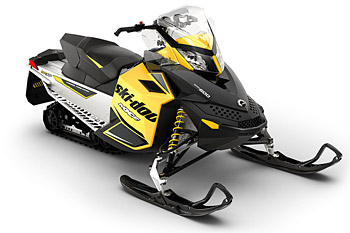There’s no argument here that the Ski-Doo XP is one of the lightest, if not the lightest sleds offered for sale in today’s marketplace.
The Polaris Indy is another example of a very light production sled. However, even the extremely light XP and the bonded-with-glue Indy have room to shed more weight.
The question is this, though: Would you pay extra to buy a sled that was all-out light? What if you could shave an extra 40 pounds out of the dry weight?
Weight savings of this magnitude don’t come cheap. You’d likely be paying well over $2,000.00 to get a factory-build, exclusive model of what you’re riding now with this much weight peeled off.
What would you be getting? Likely, carbon fiber would be used for all body panels and perhaps even the tunnel and bulkhead. The seat would be a hollow core design, shortened and with minimal padding. A-arms would be made of either chromoly, aluminum or even titanium – same with skidframe suspension arms and support structures for the steering such as tie rods, pitman arms and steering racks (if applicable).
A lightened up exhaust system may have thinner walled metal in the expansion chamber, less packing in the muffler and, depending on the sled’s design, be shorter and more compact.
Extras like electric start, reverse and anything more than minimalist gauges would be purely optional. Fasteners would be made of precious metals.
Since engines, clutches and drive parts require extreme durability, beyond using hollow or stamped drives, these would not likely get much weight reduction.
Gears could be hogged out and heat-treated but most are already built to their minimum weight/maximum strength quotient on production sleds.
Want lighter? Get out your wallet!








